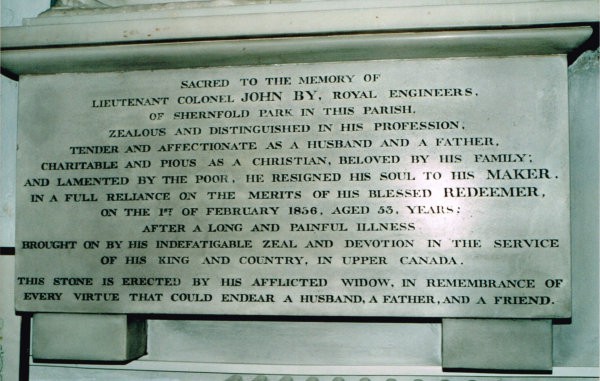Memory is a curious phenomenon. The other day I received, out of the blue, an e-mail forwarded to me from a former student I last saw in 2009, and we have arranged to meet. This reminded me of my teaching career and the luxury of long summer holidays that comes with the job. I recalled some events with photographic clarity. We sometimes discount the ‘illogic’ of the apparently disconnected leaps through time and space that our minds and imaginations are so prone to make at the command of Memory, but our intuition often proves the logic of such leaps if we give the matter sufficient thought. After all, intuition is the logic of the emotions. A series of subsequent reflections eventually resulted in a decision to write the following narrative travelogue. Some context for this may prove helpful for those making the journey with me.
Behind the battlements of the Chateau Laurier, in Major’s Hill Park, a lush green space overlooking the Ottawa River, Parliament Hill, and neighbouring Gatineau on the Quebec side of the river, stands a statue of a man as yet unviolated by vandals lacking an understanding of history. With his back to Parliament Hill and the Rideau Canal, whose construction he oversaw between 1826 and 1832, Colonel John By of the Royal Engineers (1779-1836) is a striking figure in his military uniform, and a fitting memorial of the important role he unwittingly played in the development of Canadian national consciousness. Despite official obfuscation and climatic and environmental impediments that compromised his health, it was Colonel By’s skill, stamina and determination that resulted in the triumph of engineering that is his Rideau Canal. Intended to provide a safe route for shipping from Kingston to Montreal and Quebec City by bypassing American naval strength in the St. Lawrence—hostility from whom was not at all a far-fetched possibility in the wake of the War of 1812—the Canal was then, and is today, a navigable waterway between these Canadian cities, making use of a series of locks, lakes, and rivers at a time when roads were of poor quality or non-existent. When the work was complete, Colonel By was raked over the coals for overspending. Although he was subsequently exonerated, his military career was over, and he retired to Frant in East Sussex, where he died shortly thereafter. This is the point where my two sons, then both teenagers, and I come in.
In planning our holiday in England in the summer of 1997, I came across a photograph of an upscale ‘Bed and Breakfast’ located in the village of Frant. It turned out to be the former rectory of the adjacent Church of St. Alban, in whose graveyard Colonel By is buried. I booked an expensive two-night stay there so that I could pay my respects in person.
My diary reveals that it is only a short drive from Heathrow Airport to Frant, but we prolonged it by driving past my childhood home in Surrey, the roof of the house now cluttered with solar panels, and paying a short visit to Chartwell, Sir Winston Churchill’s home for many years, a National Trust heritage property that safeguards his posterity, displays some of his paintings and the garden walls and swimming-pool he built, and has a sweeping view of the Sussex Downs. On our way to Frant, we passed through Westerham, the site of Quebec House, the home of General Wolfe, who died on the Plains of Abraham with General Montcalm in 1759, but we had no time to stop, although we did manage to take a picture of his nearby equestrian statue with upraised sword on the village green. Travelling by car in England is misleading: while a motorway drive without heavy traffic can take less time to go an equivalent distance in Canada because higher speeds are permitted, road travel on secondary roads in congested urban areas inevitably take much longer even when distances to be covered are much shorter. At any rate, after our overnight flight and a day of driving, I was glad to reach Frant by mid-afternoon, and walk over to the peace and quiet of the church next door. Inside on the church wall is a memorial to Colonel By (see attached photo), and his grave in the churchyard is marked by a sizeable granite four-sided and inscribed tombstone, beside which is located a small Canadian flag and a dedicatory plaque placed there by the Ottawa Historical Society, both of which moved me deeply.





